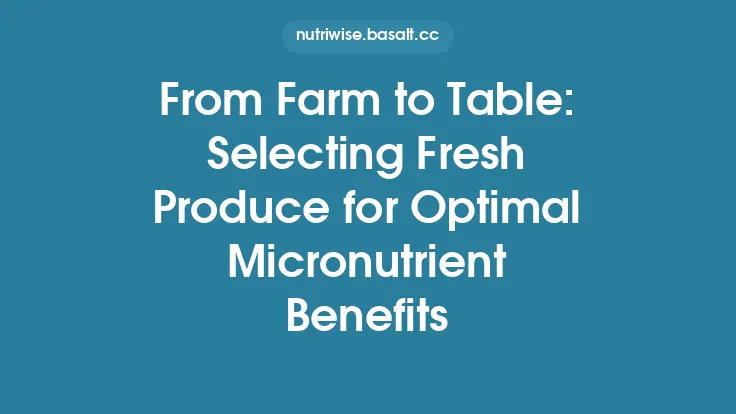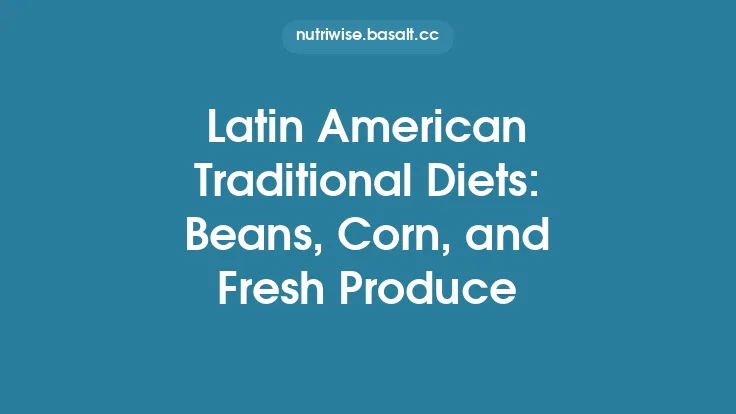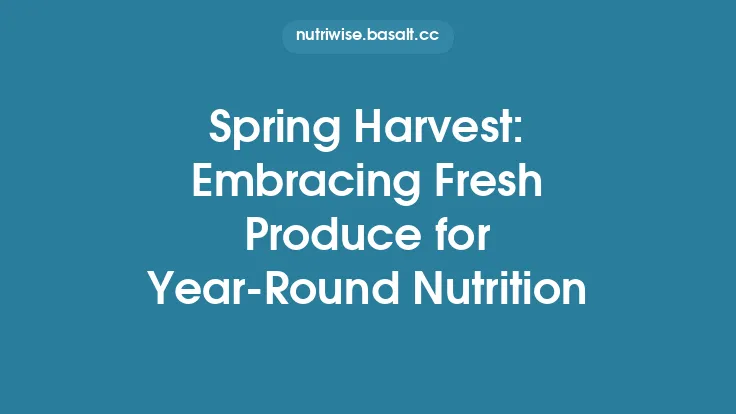Fresh produce is often perceived as a luxury, but savvy shoppers know that the best‑tasting fruits and vegetables can be found at a fraction of the price when you know where to look and how to shop. Discount stores and farmers’ markets each offer unique advantages that, when combined, create a powerful strategy for keeping your pantry stocked with nutritious, seasonal bounty without breaking the bank. Below is a comprehensive guide that walks you through the nuances of each venue, the science of selecting quality produce, and the practical steps you can take to stretch every dollar while maintaining flavor and nutrition.
Understanding the Landscape of Discount Produce Outlets
Discount retailers—ranging from national chains like Aldi, Lidl, and Walmart to regional warehouse clubs such as Costco and Sam’s Club—have built their business models around high volume, low margin sales. Their produce departments benefit from several cost‑saving mechanisms:
- Direct Sourcing – Many discount chains negotiate directly with growers or large‑scale distributors, bypassing middlemen and reducing transportation fees.
- Standardized Packaging – Bulk packaging and pre‑cut, pre‑washed items lower labor costs, which are passed on to the consumer.
- Limited Assortment – By focusing on a core set of high‑turnover items, stores can negotiate better pricing and reduce waste.
Farmers’ markets, on the other hand, operate on a micro‑scale. Vendors are often the growers themselves, selling directly from the field to the table. This model eliminates the “middle‑man markup” entirely and allows for:
- Immediate Harvest – Produce is often harvested within 24–48 hours of sale, preserving peak flavor and nutrient density.
- Varietal Diversity – Small farms may grow heirloom or specialty varieties that are unavailable in mainstream grocery aisles.
- Transparent Pricing – Vendors can adjust prices daily based on yield, weather, and demand, offering real‑time bargains.
Understanding these structural differences helps you set realistic expectations: discount stores excel at consistent low prices on staple items, while farmers’ markets shine for peak‑season, specialty produce that can be purchased at a premium of freshness but often at comparable or lower cost when you time your visits correctly.
Key Differences Between Discount Stores and Farmers’ Markets
| Aspect | Discount Stores | Farmers’ Markets |
|---|---|---|
| Price Stability | Fixed weekly or bi‑weekly pricing; promotions are advertised in circulars. | Prices fluctuate daily; “early‑bird” discounts are common. |
| Quality Indicators | Uniform appearance; often graded for cosmetic standards. | Visual cues (color, firmness) and vendor knowledge are primary guides. |
| Seasonality | Out‑of‑season items may be imported, raising price. | Strictly seasonal; out‑of‑season items are rarely available. |
| Volume | Large bags, bulk bins, pre‑packaged mixes. | Small, hand‑picked quantities; often sold by the pound or piece. |
| Additional Services | Loyalty cards, digital coupons, price‑match guarantees. | Direct interaction with growers, opportunity for custom orders. |
By leveraging the strengths of each venue—using discount stores for baseline staples (e.g., carrots, onions, potatoes) and farmers’ markets for high‑impact, seasonal items (e.g., heirloom tomatoes, fresh berries)—you can construct a produce portfolio that maximizes both cost efficiency and culinary variety.
Evaluating Quality: How to Choose Fresh Produce on a Budget
Even at low prices, selecting high‑quality produce is essential to avoid waste and ensure nutritional value. Below are objective criteria you can apply in any setting:
- Firmness & Texture
- *Root vegetables*: Should feel heavy for their size and resist pressure. Soft spots indicate dehydration or rot.
- *Leafy greens*: Leaves should be crisp, not limp or yellowed.
- Color Consistency
- *Fruits*: Uniform coloration often signals even ripening. For example, a deep orange hue in carrots or a rich red in bell peppers.
- *Tomatoes*: A slight give when gently squeezed indicates ripeness; overly soft or overly hard suggests under‑ or over‑ripeness.
- Aroma
- Fresh herbs and ripe fruits emit a fragrant scent. A lack of aroma can indicate that the produce is past its prime.
- Brix Measurement (Technical Insight)
- The Brix scale measures soluble solids, primarily sugars, in fruit juice. A handheld refractometer can be used to gauge sweetness—higher Brix values correlate with better flavor. While most shoppers won’t carry a refractometer, many farmers’ market vendors will gladly share Brix readings for their produce, giving you a scientific edge in selection.
- Ethylene Sensitivity
- Some fruits (e.g., apples, bananas) emit ethylene gas, accelerating ripening of nearby produce. When buying in bulk, separate ethylene‑producing items from ethylene‑sensitive ones (e.g., leafy greens) to extend shelf life.
By applying these criteria, you can confidently purchase produce that offers the best taste and nutrition for the price you pay.
Timing Your Visits for Maximum Savings
Discount Stores
- Mid‑Week Restocks: Many chains receive shipments on Tuesdays or Wednesdays. Shopping later in the week (Thursday–Saturday) often yields the freshest stock before the weekend rush.
- Clearance Aisles: Look for “marked down” sections where items approaching their sell‑by date are discounted up to 50 %. These are perfect for immediate consumption or freezing.
Farmers’ Markets
- Early‑Bird Hours: Arriving within the first 30 minutes often secures the best picks and the lowest prices, as vendors are eager to move inventory.
- End‑of‑Day Deals: Conversely, vendors may offer “last‑call” discounts on items they cannot transport home, providing an opportunity for deep savings on produce you can use right away or preserve.
- Seasonal Peaks: Research regional harvest calendars. For example, in the Pacific Northwest, strawberries peak in June, while kale thrives in the cooler months of October–December. Buying at the height of a crop’s season dramatically reduces cost per pound.
Creating a simple spreadsheet that logs the day of the week, store/market, and price per unit for staple items can reveal patterns and help you schedule your shopping trips for optimal value.
Leveraging Loyalty Programs and Bulk Discounts
Many discount retailers offer tiered loyalty cards that unlock additional savings:
- Digital Coupons: Scan the store’s app before checkout to automatically apply manufacturer coupons to eligible produce.
- Member‑Only Sales: Some chains reserve “member flash sales” for high‑turnover items like bananas or apples, offering up to 30 % off.
- Bulk Pricing: Purchasing larger quantities (e.g., a 10‑lb bag of onions) reduces the unit price. To avoid waste, pair bulk buys with proper storage techniques (see the next section).
At farmers’ markets, loyalty takes a more personal form:
- Vendor “Frequent Buyer” Cards: Some growers hand out punch cards—buy nine bunches of kale, get the tenth free.
- Pre‑Season Commitments: By agreeing to purchase a set amount of produce before the season starts, you can lock in lower prices and guarantee supply.
These strategies transform occasional shoppers into regular, cost‑savvy consumers who reap consistent discounts.
Building Relationships with Farmers’ Market Vendors
Personal rapport with growers yields benefits that extend beyond price:
- Insider Knowledge
- Vendors can advise on the best cooking methods for each variety (e.g., roasting heirloom carrots vs. steaming).
- Custom Harvests
- Some small farms will set aside a portion of their crop for you if you place a pre‑order, ensuring you receive the freshest possible produce.
- Extended Hours
- Loyal customers may be invited to “after‑hours” pick‑ups, allowing you to avoid the crowds and secure the best items.
To cultivate these relationships, consider the following etiquette:
- Greet vendors by name and ask about their farm.
- Provide feedback on how you used their produce.
- Pay in cash when possible, as many small growers prefer it for lower transaction fees.
A strong vendor connection can turn a weekly market visit into a collaborative experience, where you receive both quality produce and valuable culinary insights.
Utilizing Produce‑Specific Strategies
Imperfect or “Ugly” Produce
Both discount stores and farmers’ markets often have sections for cosmetically imperfect items—misshapen carrots, bruised apples, or slightly wilted greens. These are typically discounted 20–40 % and are perfectly edible. Embrace them by:
- Batch Cooking: Chop and freeze for later soups or stews.
- Pickling: Transform slightly soft cucumbers into crisp pickles.
Surplus Harvests
During bumper crops, vendors may have excess produce they need to move quickly. Look for:
- “Bag‑It‑Yourself” Stations: Some markets allow you to fill your own bag at a set price per pound, reducing packaging costs.
- Community Co‑ops: Join a local co‑op that pools surplus produce for members, often at a reduced price.
These tactics help you capture the lowest possible price points while reducing food waste.
Storage and Preservation Techniques to Extend Shelf Life
Even the freshest produce can spoil quickly if not stored properly. Below are science‑backed methods to keep your purchases edible for weeks:
- Cold‑Chain Management
- Store root vegetables (potatoes, carrots, beets) in a cool, dark environment (45–55 °F). A basement or pantry works well.
- Keep leafy greens in the crisper drawer with a high humidity setting (95 %). Wrap them loosely in a paper towel to absorb excess moisture.
- Modified Atmosphere Packaging (MAP) at Home
- Use perforated plastic bags or specialized produce containers that regulate oxygen and carbon dioxide levels, slowing respiration rates.
- Blanching and Freezing
- For vegetables like broccoli, green beans, or corn, blanch for 2–3 minutes, shock in ice water, drain, and freeze in airtight bags. This preserves color, texture, and nutrients for up to 12 months.
- Fermentation
- Cabbage, carrots, and radishes can be fermented into sauerkraut or kimchi, extending shelf life while adding probiotic benefits.
- Dehydration
- Thinly slice fruits (apples, pears) and dry them at 135 °F for 6–8 hours. Dried fruit is lightweight, shelf‑stable, and perfect for on‑the‑go snacks.
By integrating these storage practices, you maximize the return on every dollar spent, turning bulk or discounted purchases into long‑term pantry assets.
Integrating Discount and Market Finds into Your Kitchen Workflow
A seamless kitchen routine ensures that the produce you acquire translates into meals without extra effort:
- Produce “Staging”: Designate a countertop area for washing, trimming, and portioning produce as soon as you bring it home. This reduces prep time later in the week.
- Batch Prep Zones: Allocate a large cutting board and a set of containers for pre‑chopping vegetables that can be stored in the fridge for 3–5 days.
- Labeling System: Use waterproof labels with the purchase date and suggested use‑by date. Color‑code based on storage method (e.g., green for fridge, blue for freezer).
These habits create a low‑friction environment where fresh produce is always ready to be incorporated into dishes, minimizing the temptation to resort to processed alternatives.
Cost Tracking and Value Assessment
To truly gauge the effectiveness of your discount‑store and market strategy, adopt a simple cost‑tracking method:
- Create a Produce Ledger
- Columns: Date, Vendor (Store/Market), Item, Quantity, Unit Price, Total Cost, Storage Method, Use‑by Date.
- Calculate Cost per Edible Unit
- For items with inedible parts (e.g., avocado pits, beet tops), subtract the weight of waste to determine the true cost per edible gram.
- Compare Across Sources
- Periodically (monthly or quarterly) compare the average cost per pound of the same item from discount stores vs. farmers’ markets. This reveals trends and informs future purchasing decisions.
By quantifying value, you can make data‑driven adjustments—perhaps shifting more of a particular vegetable to the market when its seasonal price dips, or relying on the store for staples that remain consistently cheap.
Sustainable Practices and Community Impact
Beyond personal savings, shopping strategically at discount stores and farmers’ markets contributes to broader sustainability goals:
- Reduced Food Miles: Purchasing locally grown produce at markets shortens transportation distance, lowering carbon emissions.
- Support for Small‑Scale Farmers: Direct sales provide higher profit margins for growers, encouraging diversified agriculture and preserving heirloom varieties.
- Waste Minimization: Buying “ugly” produce and surplus items diverts food from landfill streams.
When you combine these practices with proper storage and preservation, the environmental footprint of your meals shrinks dramatically, aligning your budget‑friendly approach with responsible stewardship of resources.
By mastering the nuances of discount stores and farmers’ markets—understanding their pricing structures, timing your visits, evaluating quality with objective criteria, and employing smart storage—you can consistently fill your kitchen with fresh, nutritious produce without overspending. This integrated approach not only safeguards your wallet but also enriches your meals, supports local agriculture, and promotes a more sustainable food system. Happy shopping, and enjoy the bounty of fresh flavors that await!





